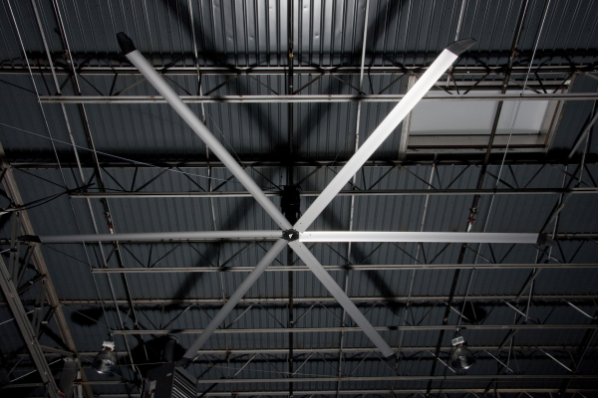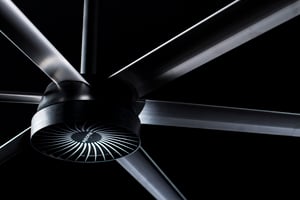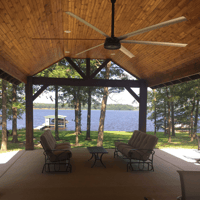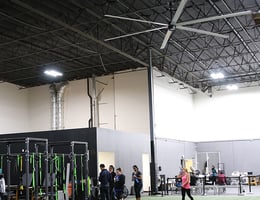Industrial Fans vs Regular Fans: What Do I Need?
If you were challenged with finding a way to cool down an industrial-size space and you had to pick between using one or two large industrial fans versus using many regular smaller fans to get it done, what type of fan would you pick? The answer seems like a no-brainer. You’d pick the large industrial fans. But what do you need to know to make an informed decision between industrial fans vs regular fans? Let’s find out. In this blog, you will read about the benefits of an industrial-sized ceiling fan for your large space. Whether it is a warehouse or a residential space, there is an industrial-sized ceiling fan solution available.
Are Industrial Fans Better than Regular Fans?
Because of the large circumference and specially designed airfoils of large industrial ceiling fans, it only takes one big fan to create balanced and comfortable airflow in a large area, compared to 34 small fans to get similar results. That results in HUGE energy savings for you. 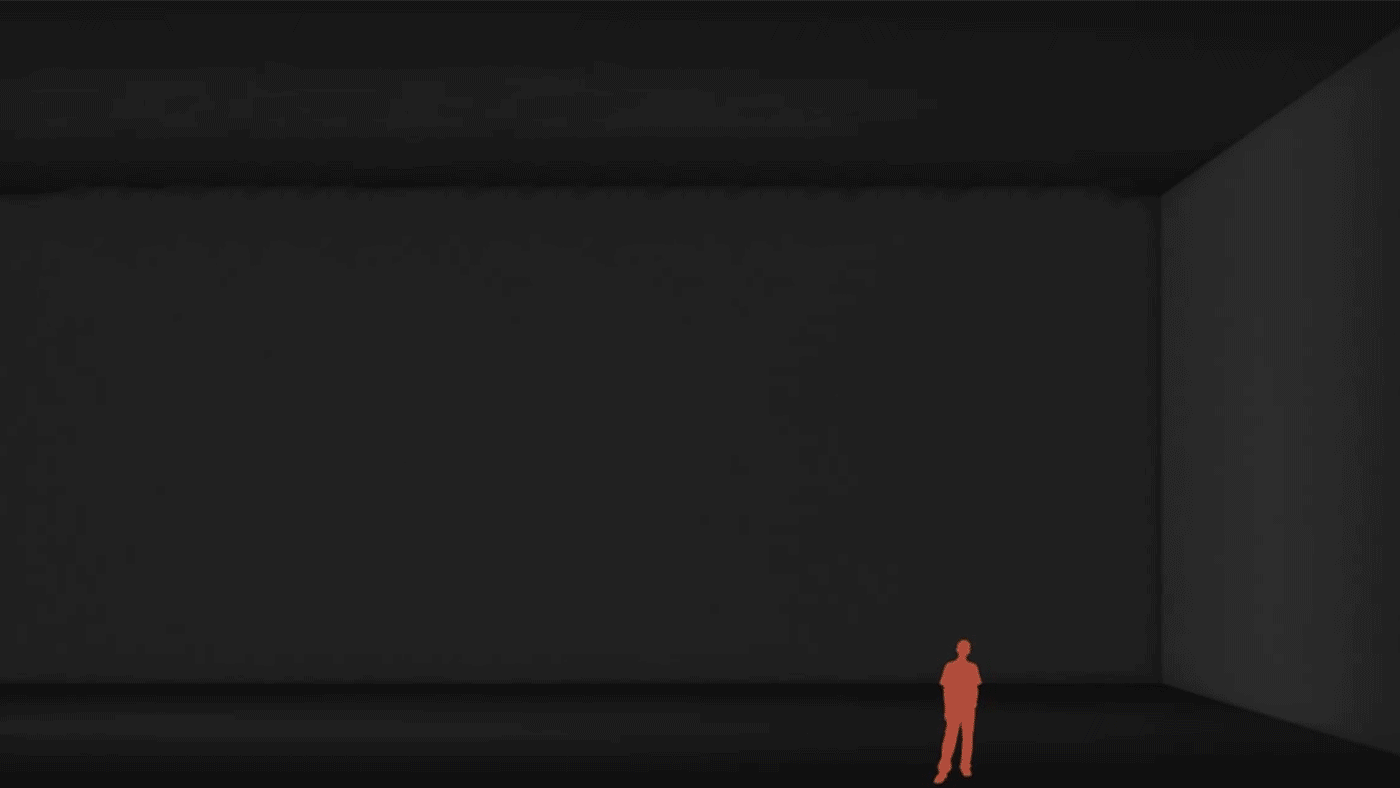 The use of space in industrial environments is usually limited because any area that is free is more than likely occupied by workers or equipment. This can be problematic if you try to use ground fans for cooling on a production or distribution floor.
The use of space in industrial environments is usually limited because any area that is free is more than likely occupied by workers or equipment. This can be problematic if you try to use ground fans for cooling on a production or distribution floor.
Additionally, having many small ground fans creates safety challenges. They become a tripping hazard from exposed wires, which also can make it difficult to navigate free space. Big industrial fans are not only a practical way to help provide comfortable airflow for workers, but the fans also assist in providing a safer work environment.
“We decided on large ceiling fans because our employees were really stressed with high heat environments, especially during the summer months. We tried some floor spot cooling fans but they often got damaged from forklift traffic and also became a trip hazard. We felt like going to a large ceiling fan was the best option for keeping our employees cool.” – Nick Soto, Operations Manager, thyssenkrupp Areospace
Industrial Fans are Energy Efficient
The biggest benefit of using a bigger industrial fan instead of many smaller industrial fans is the reduction in energy usage. An average regular fan spins several times faster than a large industrial fan. Big industrial fans are also designed to move high volumes of air at low speeds. This means you need fewer large fans to achieve what takes many small fans to accomplish.
Big industrial fans use a lot less energy than traditional fans because they push a lot of air. They also work amazingly well with air conditioning systems. A big industrial fan can reduce the amount of electricity that HVAC system uses each month, further improving energy efficiency. In fact, some MacroAir customers have been able to reduce their air conditioning tonnage by a full 25% by turning up their thermostat while running the fans.
The large, slow-moving columns of air created by big industrial fans have a wider reach, create less noise, and operate more efficiently than regular fans. MacroAir industrial fans offer the latest in innovative large ceiling fan technology. They provide a more efficient way to keep employees comfortable while on the job, which helps companies maintain quality work output and a safe environment.
Industrial Fans are Quiet
Besides reduced energy costs, large industrial ceiling fans provide powerful airflow much quieter than smaller, fast-spinning fans. The airflow speed on larger fans is much slower resulting in nearly silent operation. Decibel levels (dBs) range from 39 to 63 on MacroAir’s collection of high volume low speed (HVLS) ceiling fans. Regular smaller ceiling fans average between 60 and 70 dBs. Even more, smaller drum fans and oscillating fans have dB levels up to 90! It is important to note that prolonged exposure to anything over 70 dBs can have detrimental effects on your hearing.
The Difference Between Commercial Fans and Industrial Fans
Industrial fans and commercial fans do not have clear definitions. However, both terms do point to fans of heavy-duty construction. Manufacturing these fans may include the use of stronger materials, increased airflow capabilities, and increased motor life.
Understanding the small differences between industrial and commercial ceiling fans can help you make an informed decision when selecting the right HVLS fans for your space.
Industrial Fans
An industrial fan can be 8 to 24 feet in diameter. It is typically used in large industrial applications such as warehouses and manufacturing facilities. Large industrial ceiling fans are ideal for, you guessed it, an industrial ceiling. This is because they help increase a comfortable climate through optimum airflow. HVLS industrial fans create more energy efficiency than axial flow fans, centrifugal fans, and traditional industrial fans.
Check out one of MacroAir’s big industrial fans:
MacroAir AirVolution
- Costs only 31¢ per day to operate a large industrial ceiling fan, so it lowers energy costs.
- AirVolution’s gearbox and electric motor combination are powerful and durable.
- Click here to learn more.
Commercial Fans
Commerical fans work in spaces with ceiling heights as low as 12 feet. And, they are perfect to help cool smaller commercial spaces. This includes restaurants, stadium concourses, and workout facilities. Because commercial fans are more visible to the public, commercial fans typically feature sleek looks and custom color options to add a more appealing aesthetic.
Check out one of MacroAir’s big commercial fans:
MacroAir AVD370
- Only two moving parts require zero maintenance.
- No liquids, no oils that could leak from the gearbox motor.
- Sleek design featuring custom color options.
- Click here to learn more.
When It Comes to Airflow, There is No Difference
Because of the large diameter of the fans and the specially designed fan blades of both industrial and commercial ceiling fans, it takes fewer fans to create balanced and comfortable airflow in a larger space.
What’s further, you get the same high volume of airflow from industrial and commercial ceiling fans compared to traditional fans and blowers or power roof ventilators. It really comes down to aesthetics. If you have a more visible space to the public, then you would want an HVLS fan that is more visually appealing, like the MacroAir AVD370 mentioned above.
Industrial Fans at Home
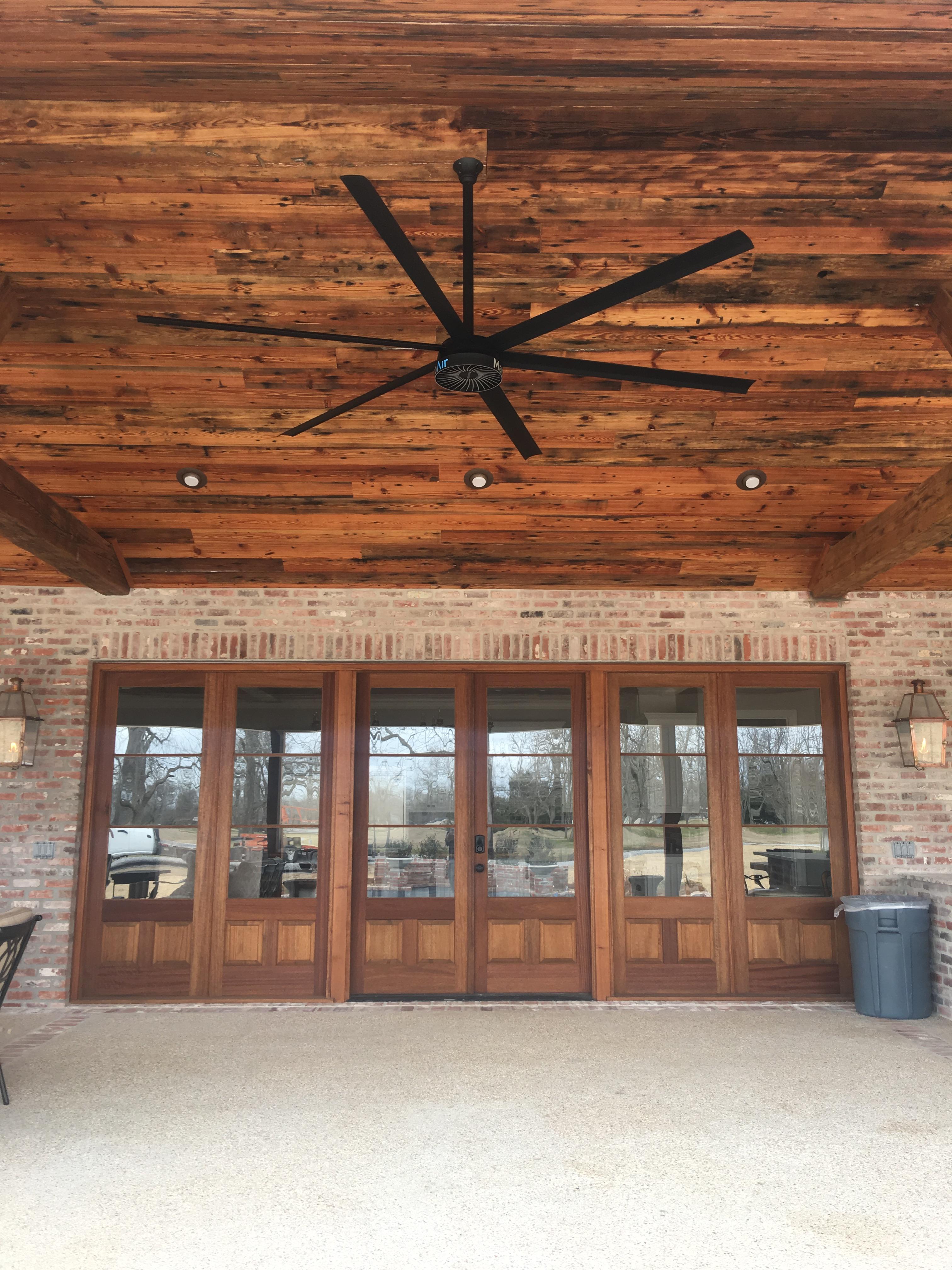
Industrial fans actually work beautifully for residential use. If you have a covered patio space that is in need of air movement, large industrial ceiling fans are perfect for your outdoor residential spaces. They will keep the air moving efficiently. Additionally, they are outdoor-rated and customizable in size, color, and finish to fit your space perfectly.
They are not just for outdoor use at home, but they are also perfect for large great rooms and living rooms. The industrial look and size are very on-trend within your living spaces. The AVD370 by MacroAir can actually accommodate ceiling heights as low as 12 feet, and comes in some beautiful colors and finishes!
One more residential area that is perfect for these fans is your garage and shop. Proper ventilation and air movement are essential for your own safety. Plus, it will help keep you cooler while working in your garage/shop. If you are a tinkerer and love to be in your garage/shop space, this is an ideal way to keep yourself cool while working.
Let Us Help!
Now that you know the differences and similarities, you can confidently select the correct type of fan for your space. Let us help you! We here at MacroAir are happy to help you find your perfect industrial fan solution. Whether it is for a warehouse facility, commercial facility, or residential space, we will help you find your perfect big fan.
Click the link below to learn more about how MacroAir big fans can help cool you down more efficiently than regular small fans. 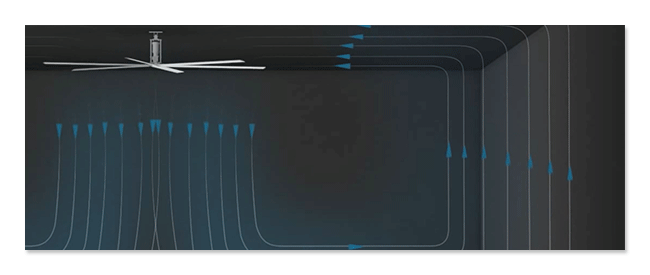
www.macroairfans.com
